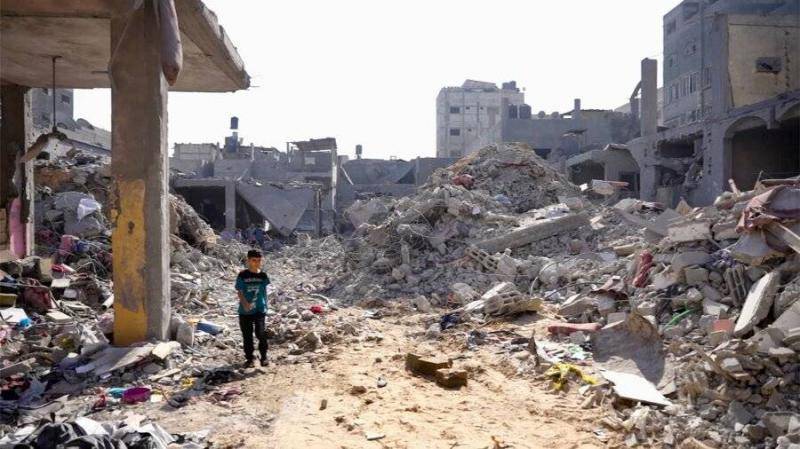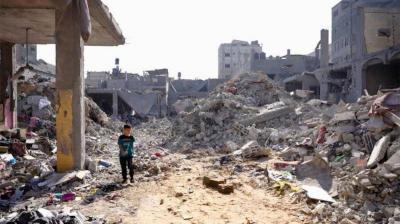The United Nations Office for the Coordination of Humanitarian Affairs quoted the Palestinian Civil Defense stating that over 10,000 people are missing under the rubble as a result of Israeli airstrikes in the Gaza Strip. The office indicated that the Palestinian Civil Defense is facing immense challenges in recovering bodies, including a lack of equipment, heavy machinery, and personnel, warning that it could take up to three years to recover bodies using the primitive tools available to them.
The ongoing war, lasting nearly seven months, has caused significant human losses and extensive damage to civilian infrastructure, including health facilities. The task of recovering bodies from the massive number of collapsed buildings has become an enormous and very difficult undertaking, and is not a priority.
Just days ago, the spokesperson for the Palestinian Ministry of Health in Gaza, Medhat Abbas, clarified that the sector originally had hospitals and civil defense teams to rescue people trapped under the debris and systems to count casualties, adding that "all of that has collapsed," according to a report by the New York Times. Abbas indicated that to estimate the number of dead, the ministry now heavily relies on other sources of information, such as testimonies from relatives of the deceased, videos of the impacts of the airstrikes, and reports from media organizations.
It appears that revealing the true picture of human losses in the war will take a long time, as estimates suggest that thousands of people are still buried under the rubble and in unmarked graves, according to local health authorities, witnesses, and UN teams. There are not enough heavy machines to remove the debris, in addition to a significant shortage of fuel to operate the already available machinery, according to the New York Times. Approximately 57% of buildings in Gaza have been damaged or destroyed since the beginning of the war, according to an analysis of satellite data conducted by remote sensing experts from the City University of New York and Oregon State University.
The United Nations states that it will take many years and hundreds of millions of dollars to clear the debris that has accumulated thus far. Warnings have been issued about diseases that could be transmitted by unburied bodies. World Health Organization Director-General Tedros Adhanom Ghebreyesus had cautioned in December of last year about the increasing risk of infectious diseases in the Gaza Strip, especially with the ongoing displacement and the humanitarian conditions resulting from the war between Israel and Hamas. He stated, "As displacement continues to grow massively across southern Gaza, with some families forced to be displaced multiple times and many seeking refuge in overcrowded health facilities, my colleagues and I at the World Health Organization remain very concerned about the increasing risk of infectious diseases."
Despite fears of missile strikes and gunfire in Gaza, another danger looms, threatening the population, especially in the southern cities where hundreds of thousands of displaced persons are hosted. It was confirmed that about 180,000 people suffered from upper respiratory infections, while 136,400 cases of diarrhea were recorded, half of whom were children under the age of five, along with 55,400 cases of lice and scabies, 5,330 cases of chickenpox, and 42,700 cases of skin rashes, including 4,722 cases of impetigo.
Epidemiologists estimate that these conditions could lead to the deaths of more than 85,000 Palestinians over a few months due to injuries and diseases and lack of medical care, deaths that would not have been anticipated but for the war, according to a report by the New York Times. Humanitarian workers from the United Nations reiterated warnings about the ongoing devastating impact of the war in Gaza and the need to ensure reliable supply lines to provide aid to those in urgent need in the sector.
The United Nations Office for the Coordination of Humanitarian Affairs reported that relief organizations are still facing several restrictions on access to those in need of assistance throughout Gaza, including denials of planned missions or long delays at Israeli military checkpoints on roads in northern and southern Gaza.




